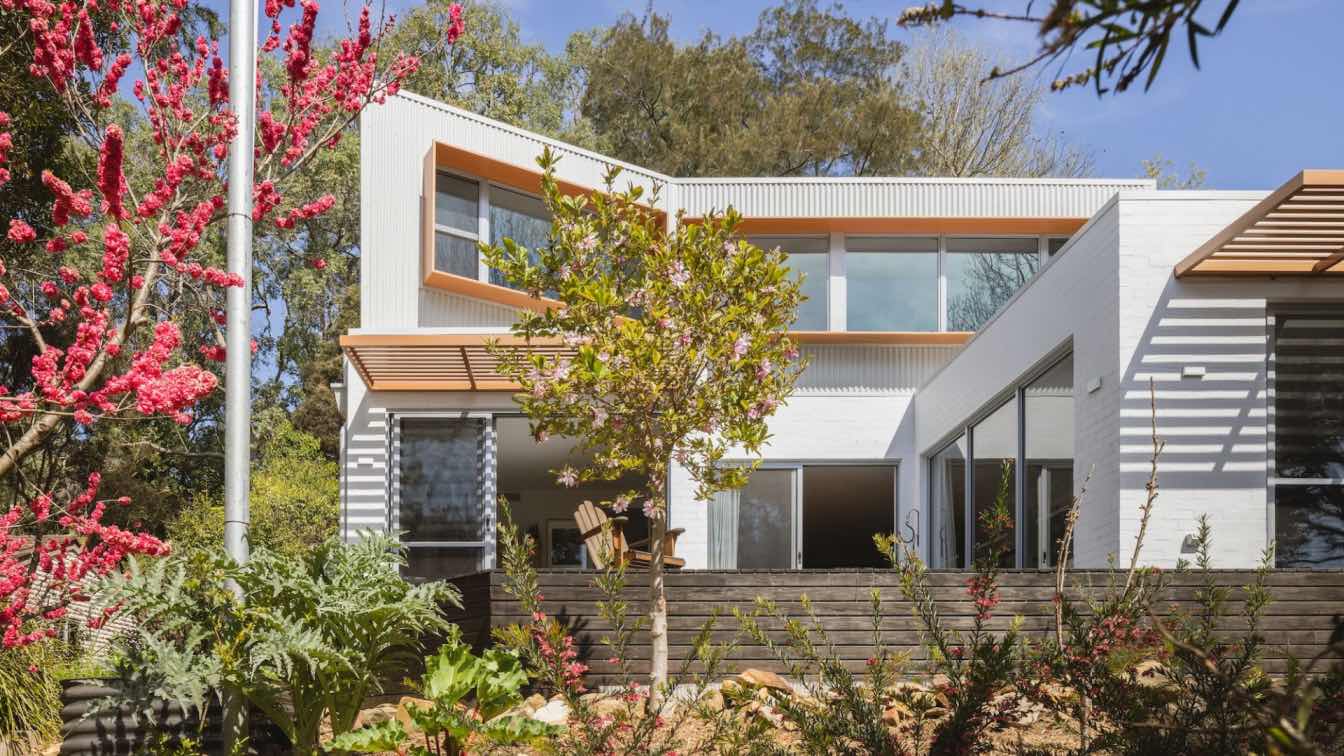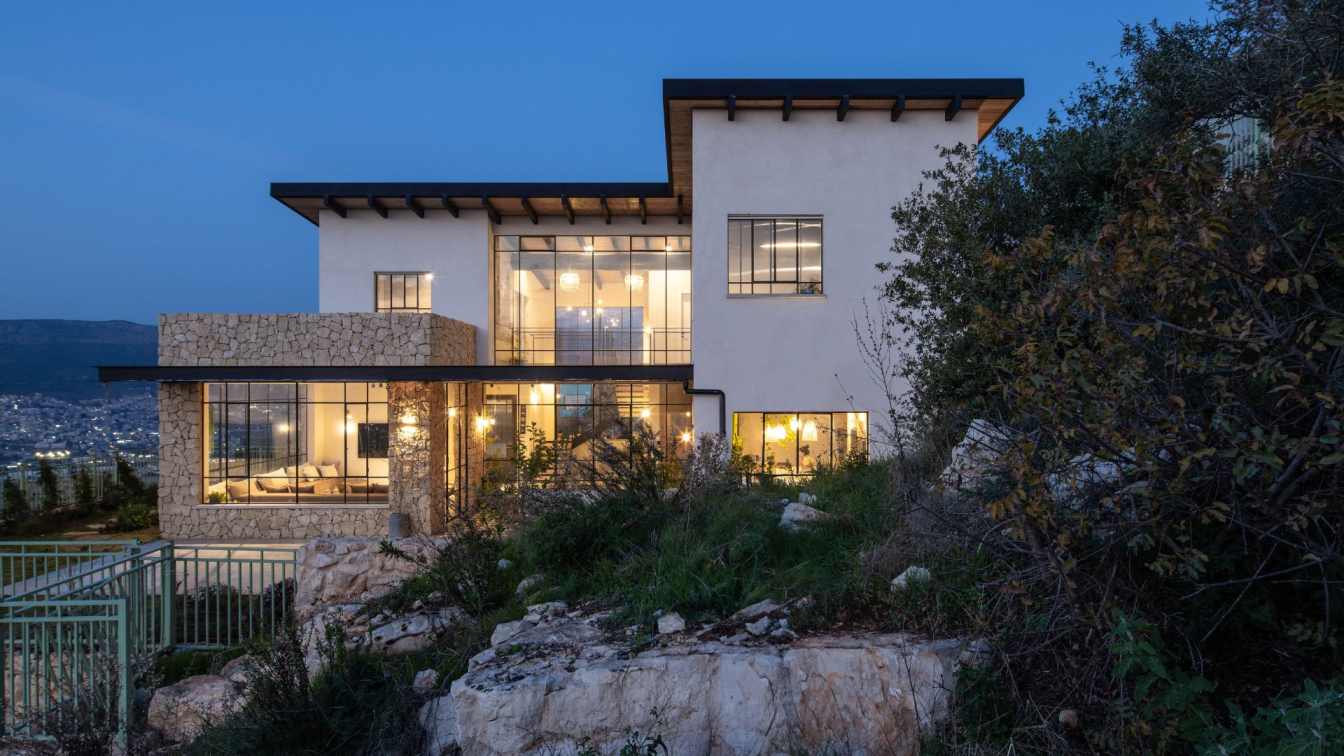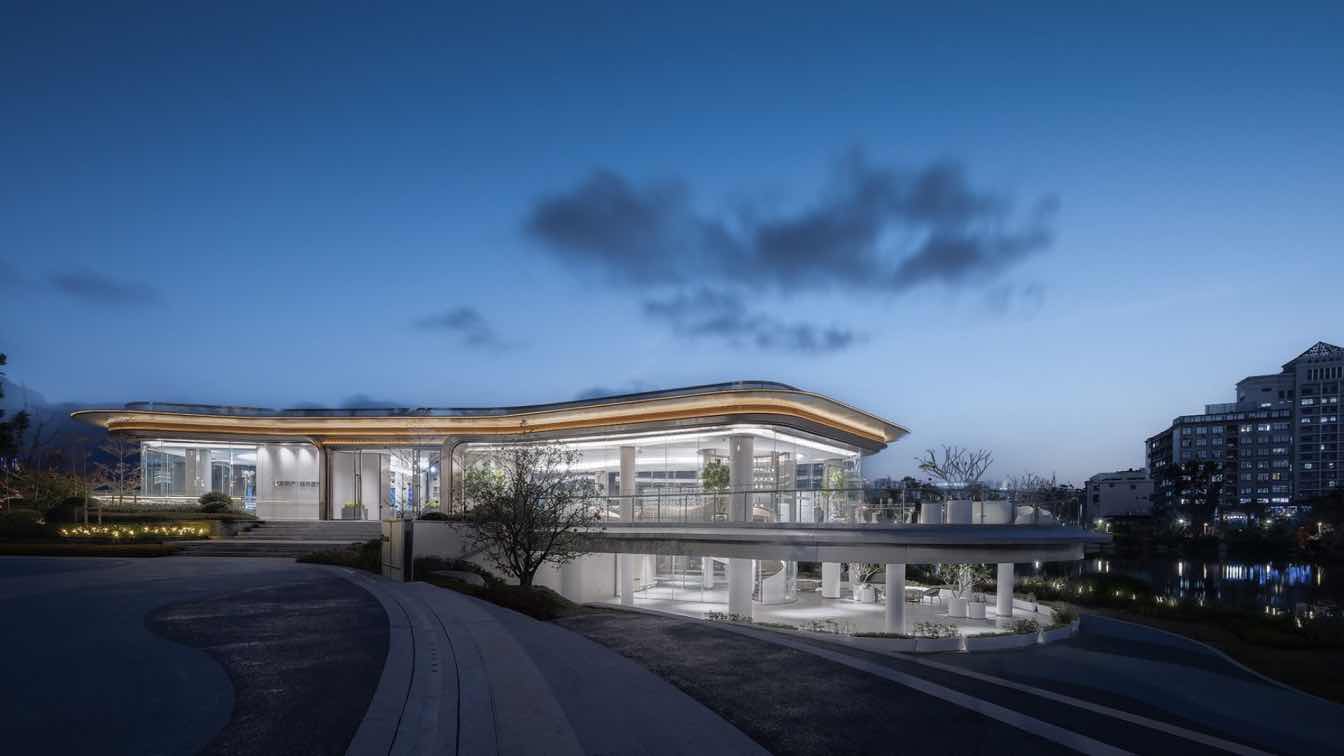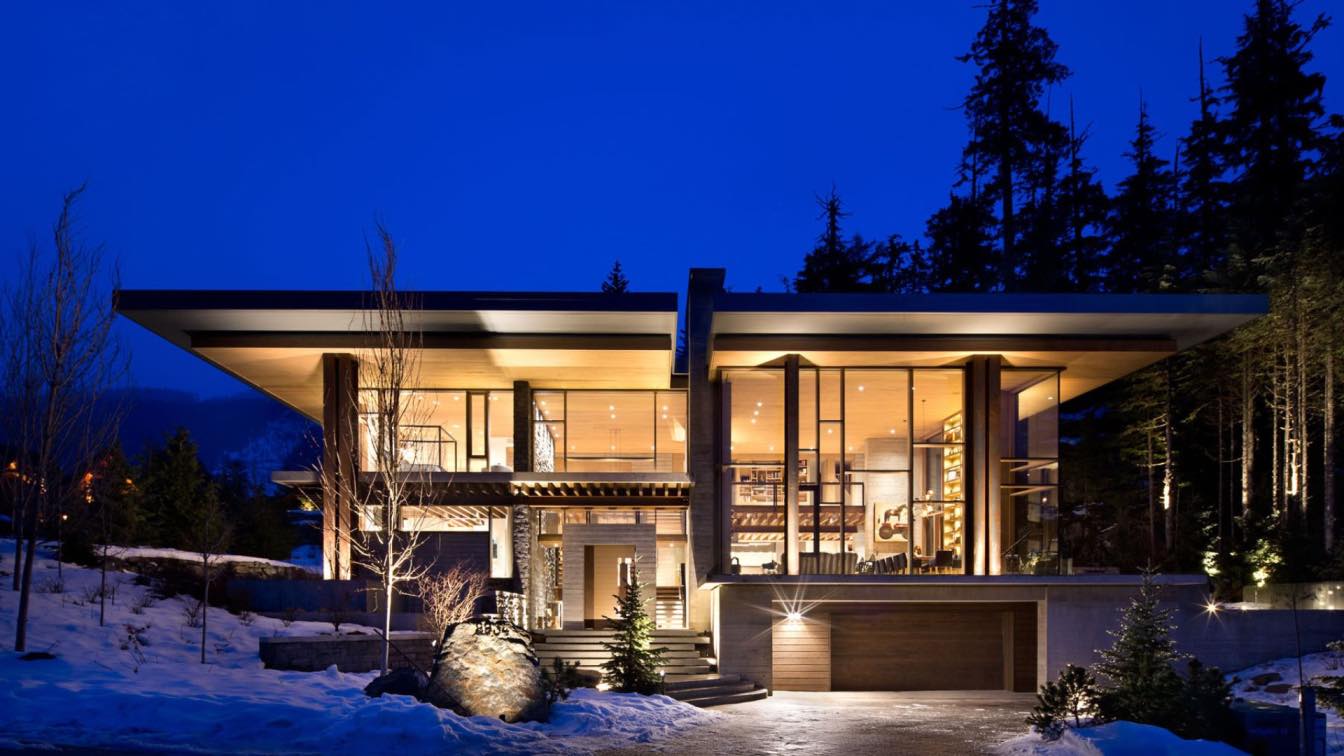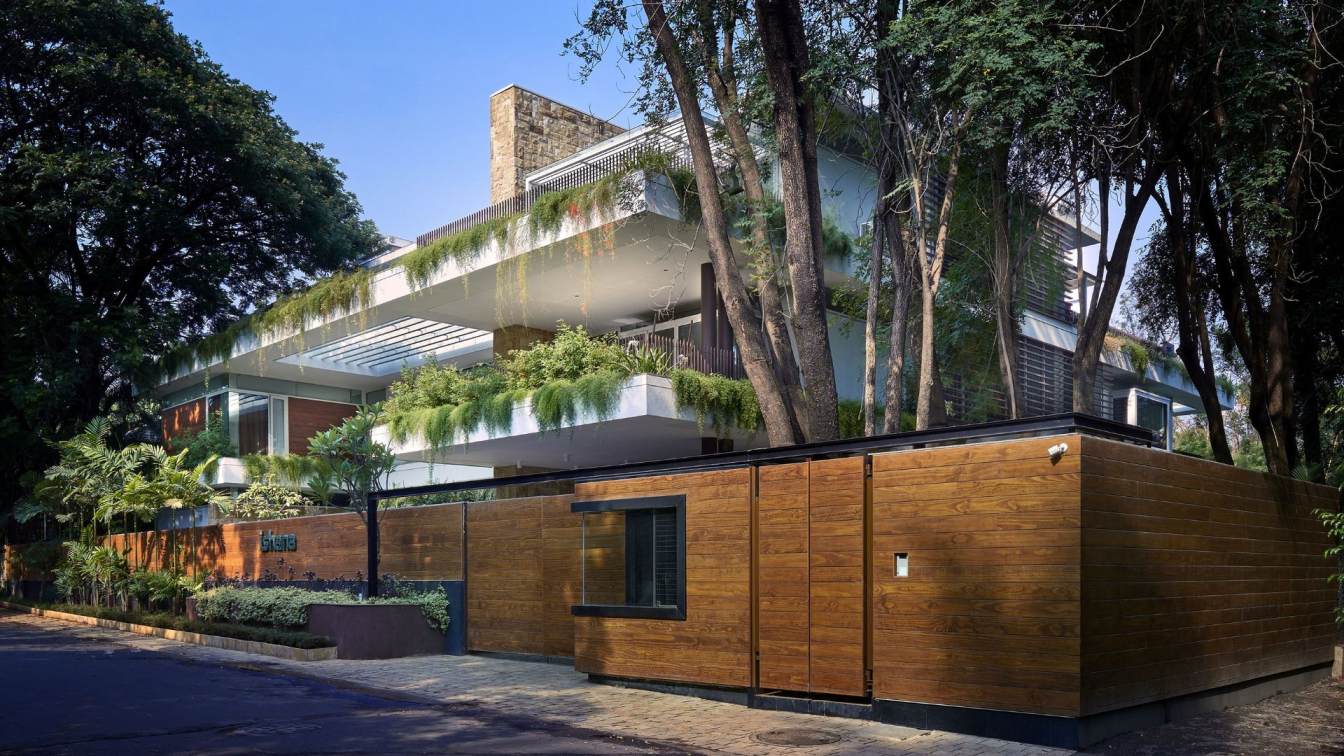Sandbox Studio: Replacing an existing home within Picton, in New South Wales, the proposal retains some of the remaining foundations, reusing materials across the site in a more deliberate way. In much the same way that a home retains the stories of its owners, the pieces dotted throughout become a reflection also of past travels, adventures, and memories, and prioritising the display of these was key for the owners of Picton Arthouse. With an extensive collection, a balance needed to be created between filling the interior with reminders of the past, while also ensuring a connection to the established landscape could also be felt.
Painted brick and corrugated steel sheets wrap the exterior form and create an angled silhouette that then stands more boldly in place, and amongst the other existing homes. Overcoming planning challenges, the originality and unique response to the site was granted approval along with the merit of its proposition appreciated. The result sees a contrasting figure sit amongst the trees and align with the more dramatic lines of the sloping site. As well as defining its presence, the interior needed to be warm and welcoming and signal the familiarity of a family home – the home becomes a balance of these two gestures.
Orientation to gain as much from the natural elements was prioritised, as was integrating setbacks to control solar gains and ensure a passivity as much as possible. The overall vision for the site was to create a place of calm and retreat, and as a sanctuary that spoke to the owners and how they wanted to live. As an escape almost, the restraint in the palette and the quietness created by the surroundings work together to enhance a feeling of being transported once inside. Being conscious of materials and methods that had a modesty to them was also key, driving the selections and the planning. Wanting to not overwhelm the site, but also to ensure an appropriate affordability, the result also needed to be efficient and affordable.
The distinctiveness of Picton Arthouse is underscored by its extraordinary site. Characterised by a steep slope and mature trees, the new form seamlessly blending into its surroundings, creating a place of reprieve and contemplation, accompanied by a symphony of birdsong throughout the day. In the marrying of old and new, and in the incorporation of people and place, the resulting home becomes the ideal foundation for the owners to make their own.

What were the key challenges?
One of the challenges was working with the steeply sloping site, and also positioning the dwelling in a way to avoid the need to remove trees or vegetation.
What was the brief?
The brief was a 'forever home' with a big garden and space for their art collection.
Who are the clients and what's interesting about them?
The clients are very well-traveled and have collected art and objects from their travels. So the result is that the home tells their story.
How is the project unique?
The uniqueness of this project comes from the site's established native garden, bush views, and the clients' artwork and collections.
What building methods were used?
Painted Brickwork, metal cladding, metal roofing, concrete slab on ground.







































